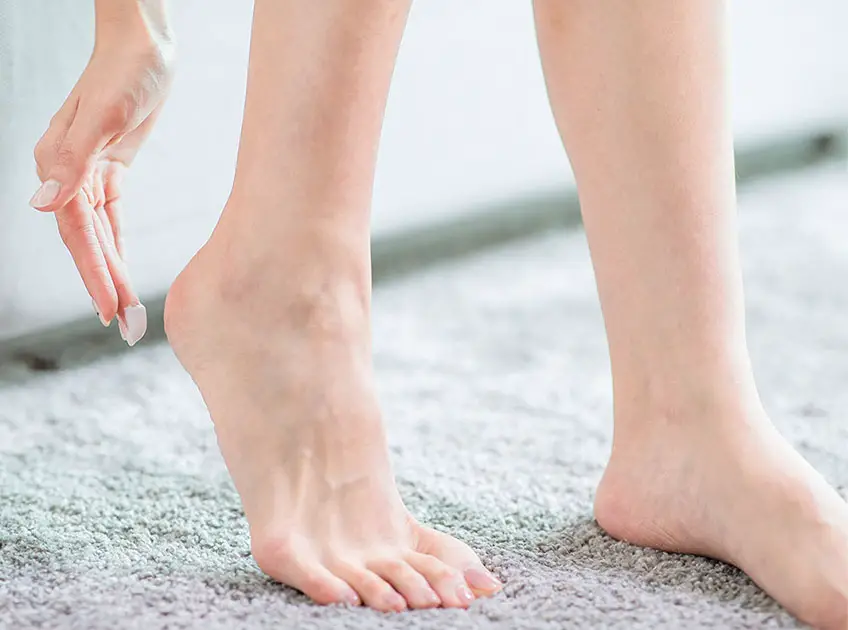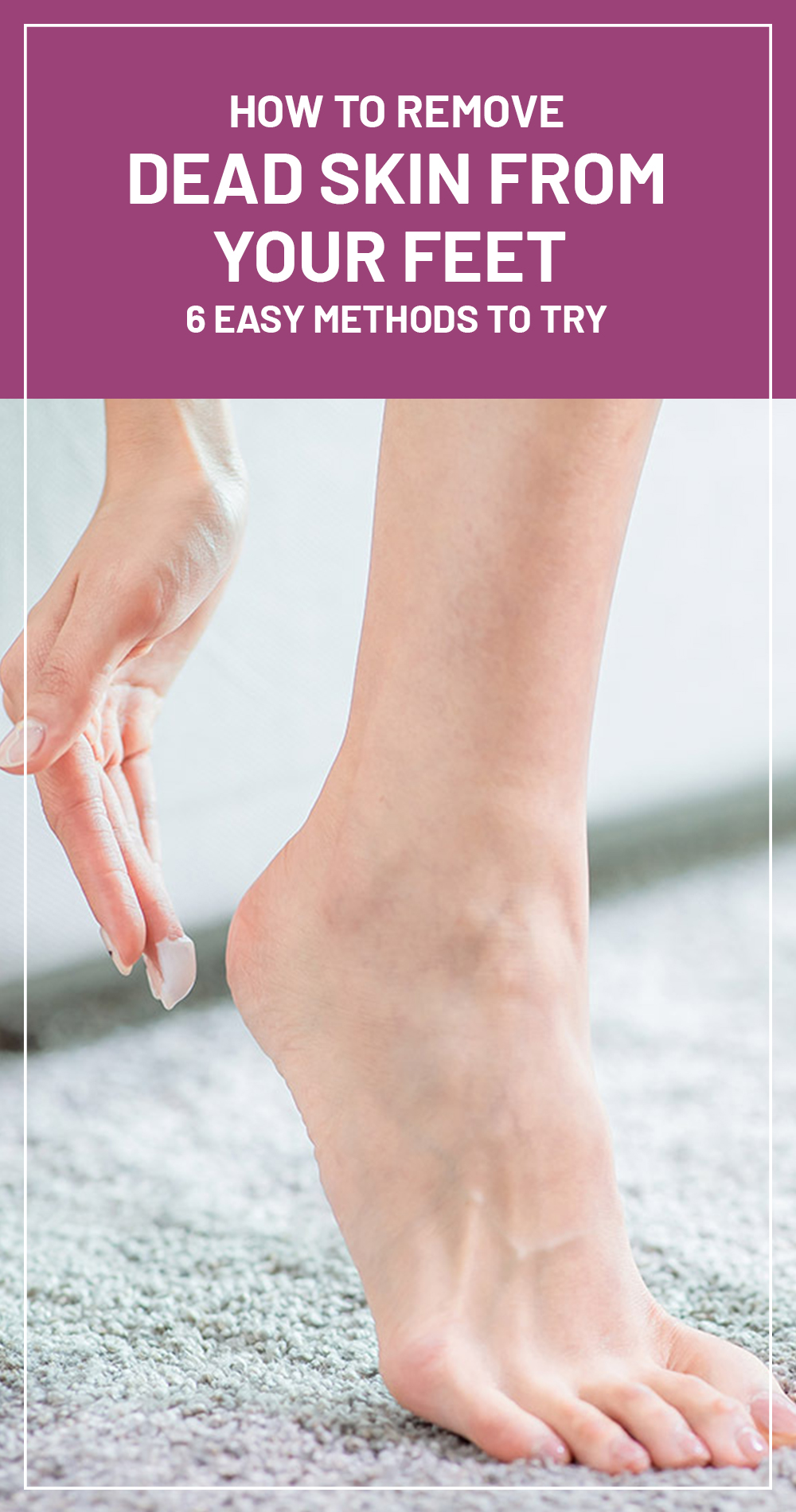
Important: This article is for informational purposes only. Please read our full disclaimer for more details.
Our feet shed the dead skin cells when there is a lack of enough moisture or if they are continuously in closed shoes or socks. Walking and running bare feet can also cause this when there is no regular exfoliation, scrubbing, and cleaning. These dead skin cells are not painful unless caused because of any infection, eczema, or athlete’s foot. Read on to know some ways of removing the dead skin from the feet.
6 Easy Ways to Remove Dead Skin from Feet
1. Scrubbing with a Pumice Stone

Process:
- To use this, first, the pumice stone needs to be dipped in warm water for 10 min.
- Alongside, the feet can also be soaked in 10 minutes so that the dead skin would soften.
- The stone can be moved in circular ways to scrub off the top layer of dead skin so that healthy cells can be formed again.
- This has to be followed by the application of some lotion or oil for softening the feet.
Caution: In case of an existing injury in the feet, avoid using the stone.
[ Recommended: Homemade Foot Scrubs to Remove Dead Skin ]
2. Paraffin Wax

Process:
- Paraffin wax can be melted and brought to at 125°F or 51°C, using a saucepan.
- Use a candy thermometer to monitor the temperature.
- Then it can be transferred to a bowl for dipping the feet several times.
- This will result in the formation of many layers of wax formation.
- Now the feet need to be wrapped in plastic.
- Once the wax hardens, it can be removed to scrap off the dead skin cells along with it.
- This will make the feet feel soft.
Caution: People having rashes, sores, lack of feeling in feet or poor blood circulation should avoid using this.
[ Recommended: DIY Foot Scrubs for Cracked Heels ]
3. Sea Salt, Lemon Juice and Baby oil
Process:
- This can be taken as 2 parts seas salt with an equal amount of baby oil and lemon juice.
- The mixture can be used with a sponge or brush for removing the dead cells.
- This has to be rinsed thoroughly with warm water.
[ Recommended: DIY Detox Foot Soak Recipes ]
4. Oatmeal Scrub
Process:
- This is one of the easiest exfoliators at home which can be made by combining equal parts of oat milk, rose water, or milk to create a paste.
- It can be applied on the feet and left for 20-30 min.
- Using a foot brush, the dead cells can be exfoliated.
- This has to be followed by rinsing with cold water and application of foot cream.
- Repeating this on alternative days can make the feet smoother.
5. Soaking in a Solution of Epsom Salt and Vinegar
Benefits: This helps in exfoliation, as well as smoothening the dried and cracked feet.
Process: For this, you need 1/2 cup of salt in a bathtub full of water and soak the feet for about 20 minutes. Then the dry skin can be scrubbed off using a foot brush or pumice stone.
6. Soaking in Vinegar
Any type of vinegar can be used for this, though apple cider vinegar or white vinegar are the common choices.
Process:
- For creating the soak, take 2 parts cool water and 1 part vinegar.
- Keep the feet soaked for 5-10 minutes. a pumice stone can be used for removing the dead skins.
- This can be followed by the application of moisturizer, petroleum jelly, or coconut oil.
- To keep the feet soft and smooth, put on your socks and repeat the process a few times to prevent the skin from drying.
Prevention Tips for Dry Skin on Feet
Regular application of moisturizer, using therapeutic oils, creams, or ointments, baby oil can prevent the formation of dead skin cells. Using a pumice stone often or a foot brush to shed off the dead cells can give a smooth feeling. Dead skin cells are no a serious issue but gives the feeling of roughness and leads to accumulation of dirt, which is not hygienic. So it is important to follow some regular foot cleaning routine to get rid of the dead skin cells.
Recommended Topics:
- How To Dermaplane At Home Safely
- Epsom Salt Foot Soak Benefits & How To Do It?
- Listerine Foot Soak: Does it Work?
- How to Make a Apple Cider Vinegar Foot Soak?
- 7 Best Urea Creams For Feet
















